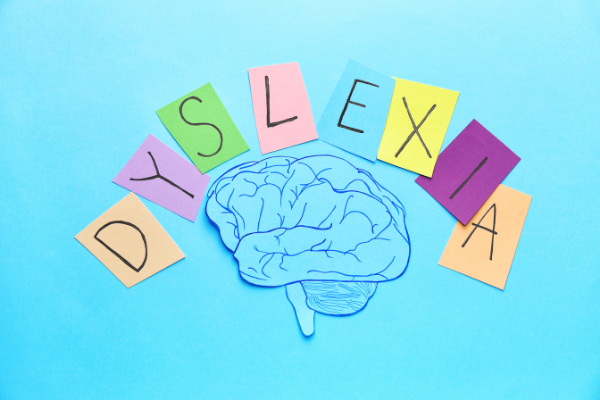Although teachers and families made extraordinary efforts to support children's learning under these difficult circumstances, the development of reading fell below expected levels. Analyzing the data from numerous worldwide studies on the impact of Covid-19 shows that reading achievement in school children was months behind that of previous cohorts.
What caused this?
School offers continual exposure to words in multiple ways. It was evident that children simply did not have the opportunity to read as much as they usually do during the lockdowns. Looking at it very simply, lack of exposure to words will halt reading development. A child still learning to read needs to see a word a few times before it is stored in their long-term memory.
Many parents working from home, understandably, found it challenging to navigate the complications of homeschooling, especially homeschooling with dyslexia, and find time to read with their children. Our technological world replaces old-fashioned book reading with screen activities such as video games, TV, or movies. With fewer reading opportunities, children did not get the same practice they usually have.
On return to school after the lockdowns, there were strict Covid-19 risk assessments and protocols. This included the quarantine of books and meant many schools had to reduce and limit their books use. Libraries were closed. Children had less access to books further limiting their contact with written words.
As a Specialist Teacher with a private practice, I have experienced an enormous increase in requests for extra support lessons, explicitly focusing on reading. Homeschooling meant that many parents could see first-hand how their children struggled, how difficult it was for them to access the curriculum and how much extra support they needed to keep pace with the class.
For these children already having reading difficulties, lockdowns meant that they could not get the extra support they usually have at school. When children returned to school, social distancing rules and Covid 'bubbles' meant that these children did not have access to the extra reading practice they so desperately needed. One-to-one intervention was a challenge; teaching behind a screen with a mask on was not conducive to an effective, multisensory lesson.
Now that most children are back at school, catch-up interventions are being implemented in classrooms and these are having a very positive impact. However, it is apparent that the 'Covid Gap' is not being filled at the same pace by those whose reading has fallen far behind their cohort. To learn more about how we can support these students, we invite you to read our article on dyslexia intervention programs.
Why is reading important?
Reading is the fundamental underlying skill that we all need to function in our world. Without the ability to read fluently and accurately, we struggle to learn and progress at school. Our choice of further education, job prospects and career progression may be limited. Having difficulties with reading also impacts children’s mental health “There is increased prevalence of mental health problems in children and young people with dyslexia and allied reading difficulties” (Deighton, J. et al. 2020).
Reading develops our vocabulary and improves general knowledge. It also helps writing skills as it fosters imagination, an understanding of punctuation and grammar, and how to use descriptive language. Stories allow children to develop their analytical skills and curiosity, which are crucial to learning. Books also showcase characters and alternative perspectives, which enables children to be more empathetic and better understand themselves, other people, and cultures.
We want all children to reach the stage where reading is an automatic process. Energy can be spent on the outcome rather than the process.
This means that books and stories can be enjoyed, and written information can be understood, analyzed, and learned.
Forbrain
Forbrain is a brilliant tool that I use in my practice when I am teaching children to read fluently. It is a headset with an electronic filter that blocks environmental noise, enhances specific voice patterns, and directly delivers sound waves to your brain via bone conduction. Repetitive use of the Forbrain headset has been proven to help reading skills.
To help any child develop confidence with their reading, I recommend small amounts of daily reading. Even 10 minutes per day of out-loud reading while wearing the Forbrain headset will significantly affect the accuracy and reading speed. Choose an enjoyable book and make sure most of the words on the page can be read. Try something much shorter and less overwhelming for a child who avoids reading, such as a poem or favorite song.
For those older learners, I recommend using Forbrain when reading any school textbook. Forbrain helps maintain attention during the reading process and will cement and improve the reading of the subject-specific language.
Forbrain as a tool for dyslexic students
Forbrain is especially good for dyslexic learners. Dyslexia is a broad term, but in essence, a child who is dyslexic will find learning to read and spell extremely challenging because they have difficulties processing sounds and mapping letter-sound links. Forbrain helps a child be aware of and discriminate sounds and supports the memory of letter-sound patterns. Forbrain has the benefit of improving attention, allowing a child to maintain focus while reading and thereby absorb the content.

When supporting any dyslexic learner with their reading, I always start at the phonological (sound) level. These learners need to appreciate the sounds and syllables at the beginning, middle, and end of words. They also need to learn to manipulate sounds e.g., take away or swop a sound in a word. Differentiating mid vowel sounds proves to be particularly tricky, and it is always important to target these. I use Forbrain’s new microphone attachment and model the sounds before asking my pupil to work with them.
Learning to read fluently can be difficult for dyslexic children. However, I have found that using Forbrain with a systematic, structured, multisensory reading program is highly effective.
Learn how you can use Forbrain here.

.png?width=1900&name=blog_banner%20(1).png)

